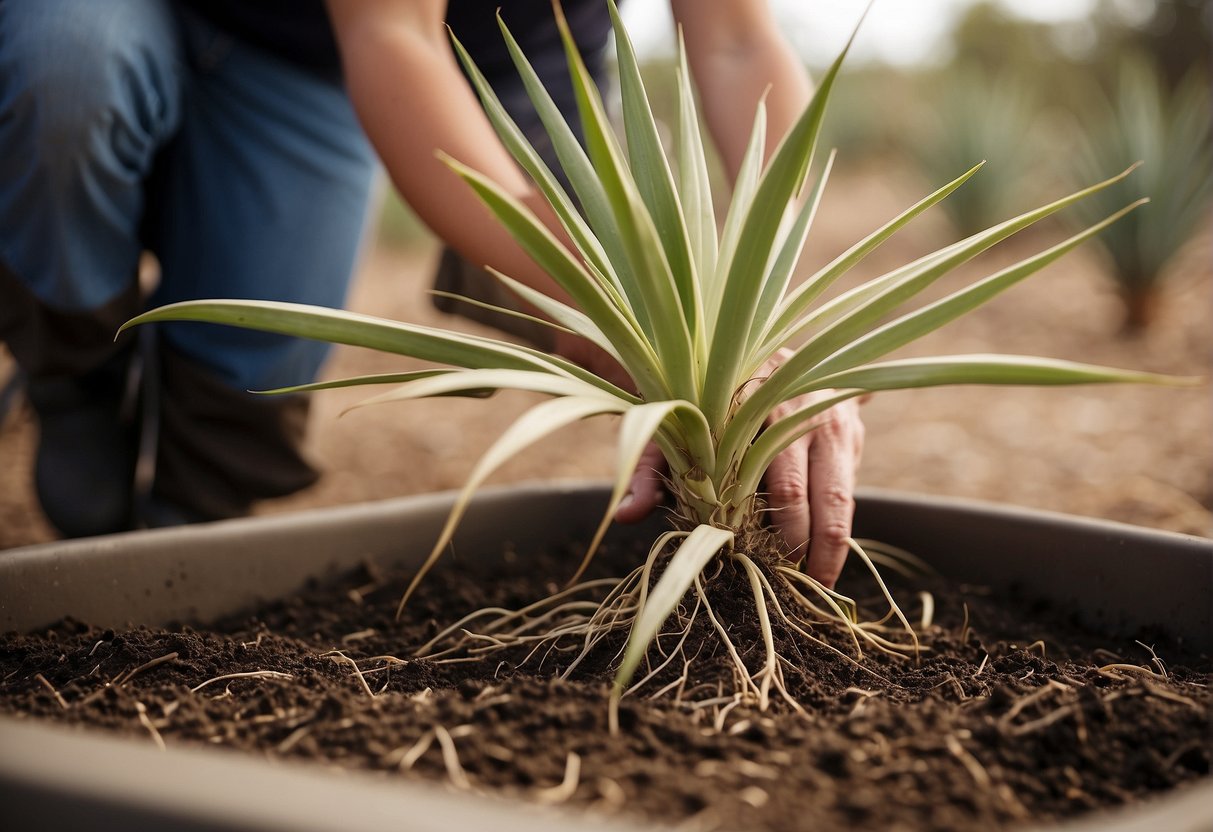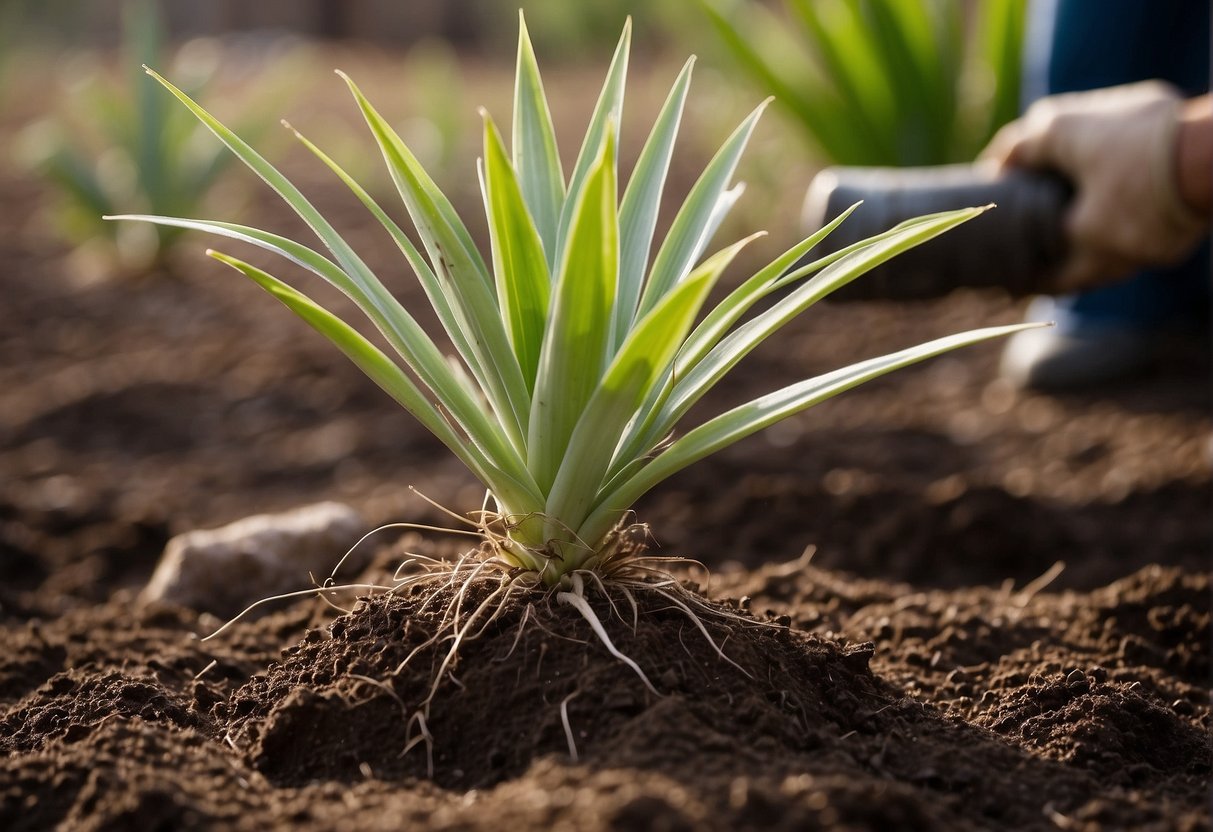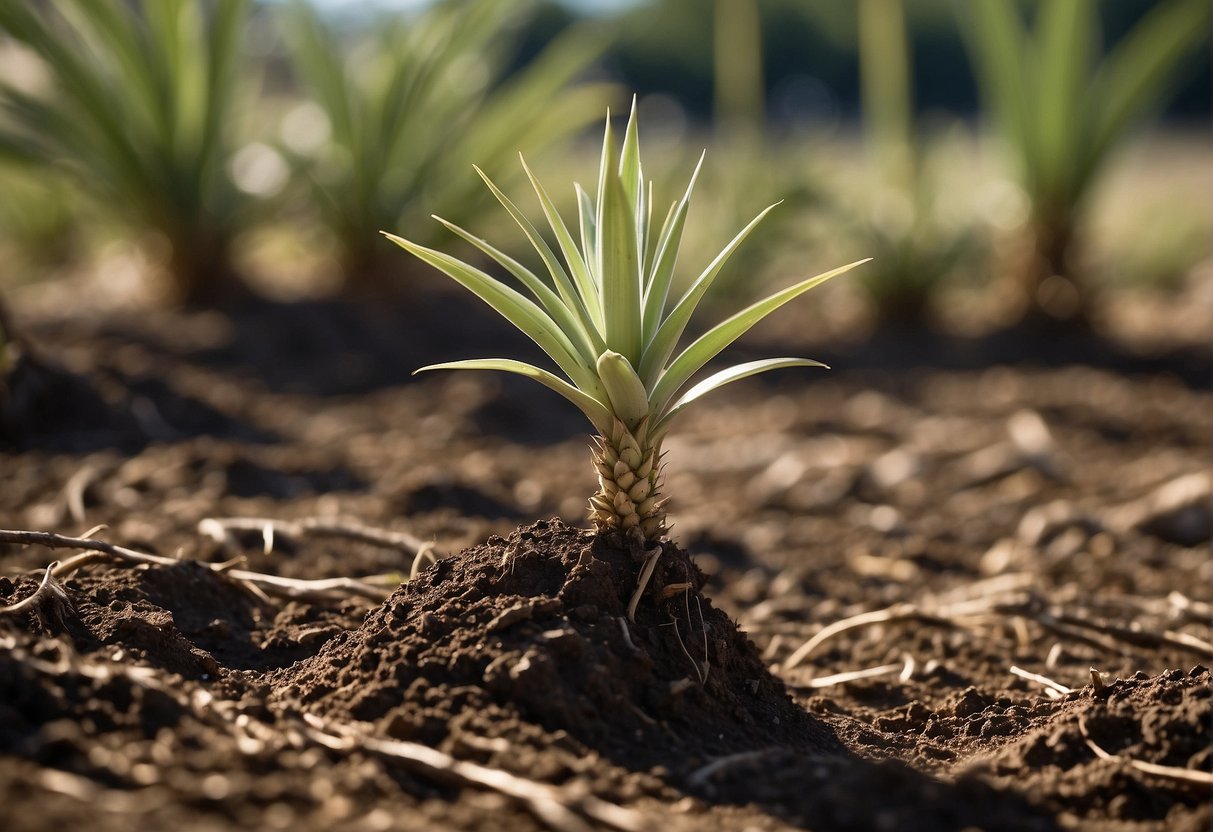When to Replant Yucca Plants: A Guide
Should your yucca plant exceed the space of its present pot or area, you might question the ideal timing for transplanting it. Transferring a yucca to a new space can significantly benefit its expansion and flourishing. Nonetheless, selecting the proper moment is crucial for the plant’s well-being and prosperous growth.

Optimal Conditions for Replanting Yucca
Yucca plants prefer well-draining soil and plenty of sunlight. When it comes to replanting, it’s important to choose a pot or location that provides these optimal conditions. Additionally, make sure the new pot or location is large enough to accommodate the plant’s root system and any growth it may experience in the future.
Replanting Process and Aftercare
When you’re ready to replant your yucca, gently remove it from its current pot or location and shake off any excess soil. Then, place it in the new pot or location and fill in the surrounding area with fresh soil. Water the plant thoroughly and continue to care for it as usual, making sure to provide the optimal conditions mentioned above.
Key Takeaways
- Replant yucca plants when they have outgrown their current pot or location.
- Choose a pot or location that provides optimal conditions like well-draining soil and plenty of sunlight.
- After replanting, continue to care for the plant by providing the same optimal conditions and watering it regularly.
Optimal Conditions for Replanting Yucca
Yucca plants are a popular choice for gardeners due to their drought-tolerant nature and low maintenance requirements. However, if you have noticed that your yucca plant has outgrown its current location, you may be wondering when is the best time to replant it. Here are some optimal conditions to consider when replanting your yucca.
Best Time of Year
The best time to replant your yucca is either in the spring or fall. During these seasons, the weather is mild and the soil is moist, which will help your plant establish itself in its new location. Avoid replanting during the hot summer months or cold winter months as extreme temperatures can cause stress to your yucca.
Soil and Sunlight Requirements
Yucca plants thrive in well-draining soil with good drainage. The soil should not be too compacted or heavy as this can cause water to pool around the roots, leading to root rot. When selecting a new location for your yucca, make sure it receives plenty of sunlight as these plants require full sun to grow properly.
Selecting the Right Location
When selecting a new location for your yucca, consider the environment and climate of your area. Yucca plants are native to desert regions and prefer warm, dry climates. If you live in an area with mild winters, your yucca may be able to survive outdoors year-round. However, if you live in an area with harsh winters, you may need to replant your yucca in a container and bring it indoors during the winter months.
In summary, replanting your yucca requires some careful consideration of the optimal conditions for your plant’s growth. By replanting in the spring or fall, using well-draining soil with good drainage, and selecting a location with plenty of sunlight and a suitable climate, your yucca should thrive in its new home.
Replanting Process and Aftercare

If you have a yucca plant that has outgrown its current pot or location, it may be time to consider replanting it. The process of replanting a yucca plant can seem intimidating, but with proper preparation and care, it can be a simple and rewarding task.
Preparing the Yucca for Transplant
Before replanting your yucca plant, it is important to prepare it properly. Start by watering the plant thoroughly a day or two before transplanting. This will help the roots stay hydrated during the transplanting process.
Next, gently remove the plant from its current pot or location. Carefully loosen the soil around the roots with a garden fork or trowel. Be sure to handle the plant gently to avoid damaging the root system.
Once the plant is removed, inspect the roots for any signs of disease or pests. If you notice any issues, it may be best to discard the plant and start fresh. If the roots look healthy, you can proceed with the transplanting process.
Planting and Immediate Care
When replanting your yucca plant, choose a pot or location that is slightly larger than its current one. Fill the bottom of the pot with a well-draining potting mix, such as a cactus mix.
Place the plant in the center of the pot and fill in the remaining space with potting mix. Be sure to pack the soil firmly around the roots to avoid any air pockets.
After planting, water the plant thoroughly and place it in a location with bright, indirect sunlight. Avoid placing it in direct sunlight, as this can cause the plant to become stressed and wilt.
Long-Term Maintenance
To ensure the long-term health of your yucca plant, there are a few key maintenance tasks to keep in mind.
First, be sure to avoid overwatering the plant. Yucca plants are drought-tolerant and prefer to be on the dry side. Water only when the top inch of soil feels dry to the touch.
Second, consider adding a layer of mulch around the base of the plant. This can help retain moisture and regulate soil temperature.
Finally, fertilize the plant once a month during the growing season with a balanced fertilizer. Be sure to follow the instructions on the fertilizer package carefully to avoid overfertilizing.
By following these simple steps, you can successfully replant your yucca plant and enjoy its beauty for years to come.
Frequently Asked Questions

What is the best time of year to transplant yucca plants?
The best time to transplant yucca plants is in the spring or fall. This is when the temperatures are moderate, and the plant is not actively growing. Avoid transplanting during the summer months when the plant is actively growing, as this can cause unnecessary stress to the plant.
How do you properly transplant a yucca plant to avoid shock?
To transplant a yucca plant, start by preparing the new planting hole. Dig a hole that is slightly larger than the root ball of the yucca plant. Carefully dig up the yucca plant, being sure to keep as much of the root system intact as possible. Place the plant into the new hole and backfill with soil. Water thoroughly to help settle the soil and reduce transplant shock.
Can yucca cuttings be planted directly into soil?
Yes, yucca cuttings can be planted directly into soil. Take a cutting from the parent plant and allow it to dry for a few days. Once the cutting has calloused over, plant it in well-draining soil. Water the cutting sparingly until it establishes roots.
What steps should be taken when dividing yucca plants?
To divide a yucca plant, start by digging up the entire plant. Carefully separate the individual plants by gently pulling them apart or using a sharp knife or pruning shears. Be sure to keep as much of the root system intact as possible. Replant the individual plants in well-draining soil and water thoroughly.
How should a yucca plant be dug up for replanting?
To dig up a yucca plant for replanting, start by watering the plant thoroughly a day or two before digging. This will help loosen the soil around the roots. Use a shovel or spade to carefully dig around the plant, being sure to keep as much of the root system intact as possible. Lift the plant out of the hole and replant in a new location.
What care should be taken after repotting a yucca?
After repotting a yucca, be sure to water it thoroughly to help settle the soil. Avoid overwatering, as this can lead to root rot. Place the plant in a location with bright, indirect light and allow it to adjust to its new environment.


